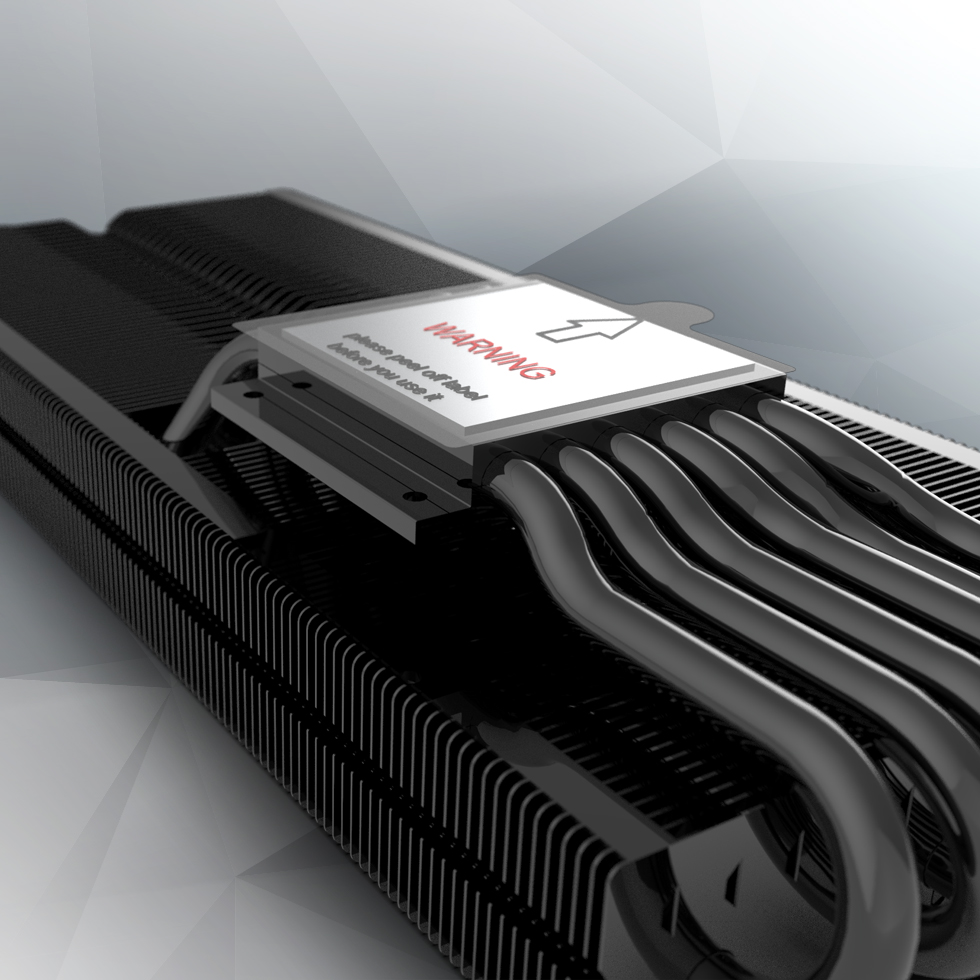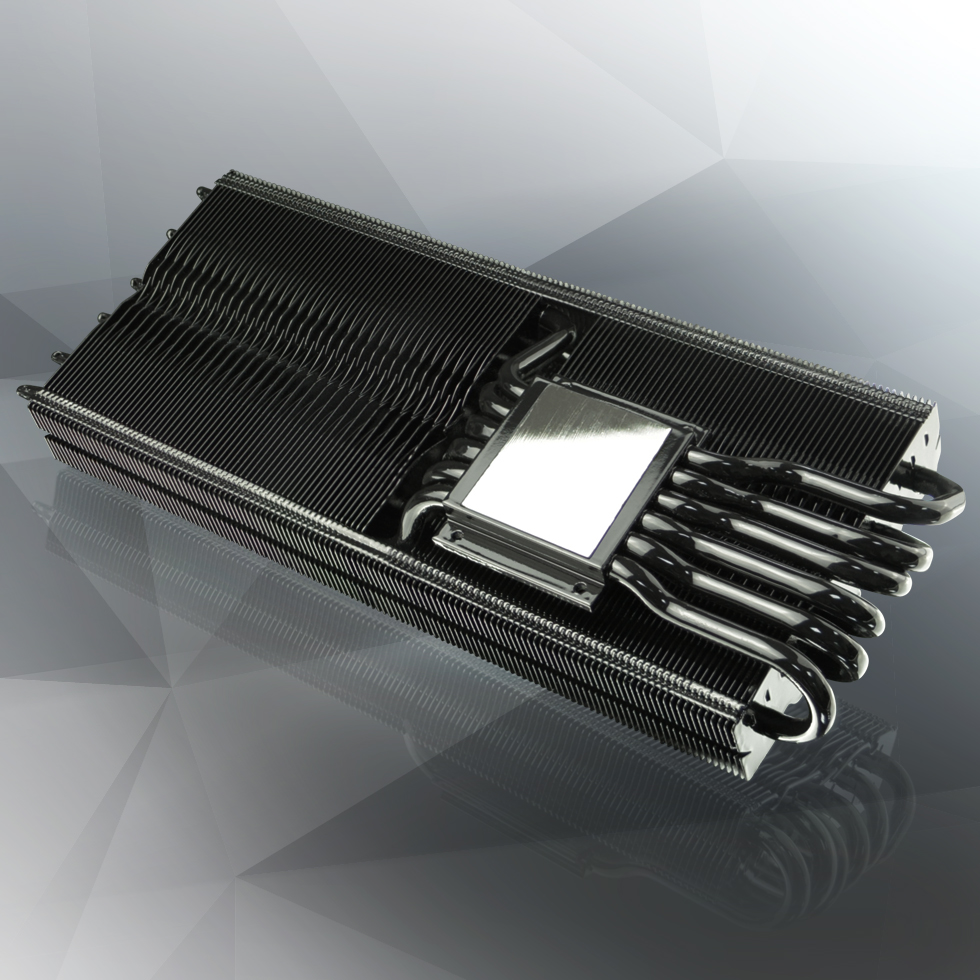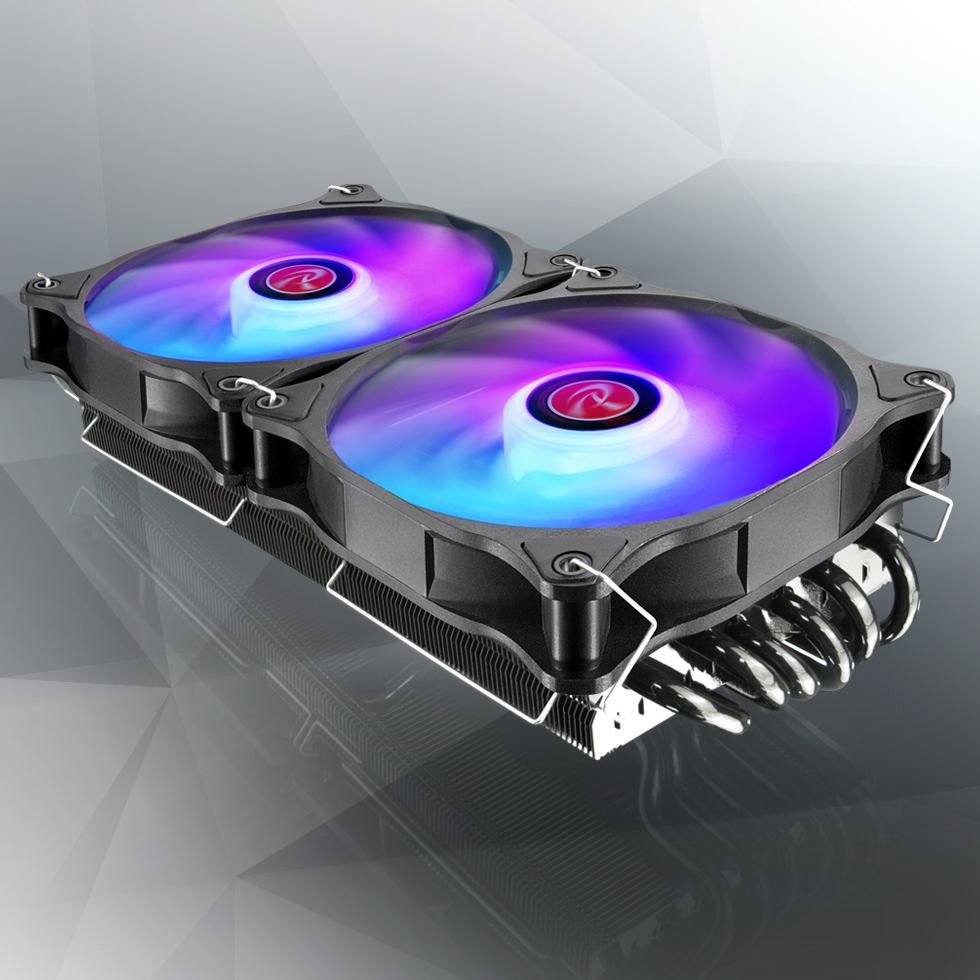Raijintek Launches Gigantic GPU Air Cooler For AMD Navi, Nvidia Turing GPUs

If you think air cooling is dead, think again. Raijintek (via @FanlessTech) has unleashed the high-end Morpheus 8057 cooler that's been tailored for the latest AMD Navi and Nvidia Turing graphics cards.
On AMD's end, the Morpheus 8057 is compatible with the Radeon RX 5600, RX 5700 and their corresponding XT variants. The list of supported Nvidia graphics cards is a bit more extensive though. The Morpheus 8057 can be used with the GeForce RTX 2060, RTX 2070, RTX 2080, RTX 2080 Ti as well as the Super variants for the first three models.
Aesthetically, the Morpheus 8057 comes with a nice, black coating that should blend into the majority of PC builds. Its brobdingnagian design, which according to Raijintek, allows the cooler to handle graphics cards up to 360W of TDP. The Morpheus 8057 measures 254 x 100 x 44mm and weighs up to 515g without any fans installed.





The copper baseplate, which flaunts a mirror finish, is connected to the giant heatsink via 12 copper heat pipes that are 6mm in diameter. The heatsink itself is comprised of a stack of 129 aluminium alloy fins. The heat pipes pass through each of the fins to maximize heat dissipation.
Unfortunately, the Morpheus 8057's design prohibits its from cooling the graphics card's memory chips or power delivery subsystem. However, Raijintek bundles three copper and eight aluminium heatsinks for the memory chips. The cooling fans aren't included either so you'll have to shell out extra cash for them. Raijintek does provide eight fan clips, four for fans with a 25mm thickness and four for ones with a 13mm thickness.
Raijintek didn't reveal the pricing or availability for the Morpheus 8057.
Get Tom's Hardware's best news and in-depth reviews, straight to your inbox.

Zhiye Liu is a news editor, memory reviewer, and SSD tester at Tom’s Hardware. Although he loves everything that’s hardware, he has a soft spot for CPUs, GPUs, and RAM.
-
Phaaze88 Reply
E-peen, what else?drivinfast247 said:Lol why?
Have you seen the Arctic Accelero Extreme IV? Literally turns the gpu into a 5 slot card...
Just get Kraken G12 or whatever and occupy far less space. -
bit_user I don't really understand how this can outperform the coolers with integrated vapor chambers, such as those used on upper-end Founders Edition models and (I think) high-end Vega cards.Reply
Yeah, it might have more heat pipes and better airflow, but getting the heat off-die seems like a major potential bottleneck. -
Alvar "Miles" Udell Only use I can see for this is for the people who bought reference edition cards but didn't buy them to liquid cool them.Reply
But then again with RDNA2 and Ampere set to bring leaps in performance, there's not much point if it's not priced right. -
eklipz330 Reply
it's supposed to be reusable. so when you upgrade, you just mount it on the new card. it should be better than any AIB cardAlvar Miles Udell said:Only use I can see for this is for the people who bought reference edition cards but didn't buy them to liquid cool them.
But then again with RDNA2 and Ampere set to bring leaps in performance, there's not much point if it's not priced right. -
Phaaze88 Reply
Better than reference/Founders, sure. But spend enough money on a nice Asus Strix, Gigabyte Aorus, Msi Gaming X Trio, EVGA FTW3, etc - basically the AIBs' high end segments, and DIY coolers like that start to lose face.eklipz330 said:it's supposed to be reusable. so when you upgrade, you just mount it on the new card. it should be better than any AIB card -
mcgge1360 Reply
Unlike CPUs, GPUs don't have a pesky lid in the way. And with the massive amount of heat they make compared to a CPU, the bottleneck is almost always getting heat OUT of the cooler. By giving it more thickness you can have more "cooler" and better fans that actually push more air down instead of sideways. Compared to almost any FE or 3rd party card, these things run cooler and quieter, with the exception of liquid cooled GPUs and maybe some of the 3 card solutions available.bit_user said:I don't really understand how this can outperform the coolers with integrated vapor chambers, such as those used on upper-end Founders Edition models and (I think) high-end Vega cards.
Yeah, it might have more heat pipes and better airflow, but getting the heat off-die seems like a major potential bottleneck. -
bit_user Reply
I know they operate on the same principle, but that's not my point. The point of a vapor chamber is to efficiently remove heat from all parts of the die and transfer it to the next element in the cooling solution. Wheres, unless you use direct-touch heatpipes, their job is only to move heat from the base into the fins.eklipz330 said:Heatpipes are essentially vapor chambers.
To be honest, I thought high-end Nvidia RTX Founders' Edition cards had both a vapor chamber and heat pipes, but I'm having trouble finding a good pic of the heatsink. I know their top-end cards use vapor chambers for many generations, now.
Anyway, the question still stands - can a solid block of metal transfer heat efficiently enough into those heatpipes, or is it a potential bottleneck? -
bit_user Reply
Not compared with something like an overclocked Skylake-X CPU, which burns similar power and where the bottleneck very much was getting the heat off die.mcgge1360 said:Unlike CPUs, GPUs don't have a pesky lid in the way. And with the massive amount of heat they make compared to a CPU, the bottleneck is almost always getting heat OUT of the cooler.
https://www.tomshardware.com/reviews/intel-core-i9-7900x-skylake-x,5092-11.html
I guess the difference vs. a CPU is that there's an intentional gap under the lid of a non-soldered CPU, where they pack more TIM than you'd have if the spreader were allowed to exert some force and squash it.
Perhaps the biggest cooling advantage GPUs have over CPUs is die size. The massive dies of high-end GPUs gives them more area for transferring the heat.
Anyway, I still think the best GPU air cooling solution would be a vapor chamber + heat pipes. The thermal conductivity of a vapor chamber or heat pipe is orders of magnitude greater than even a solid block of copper.